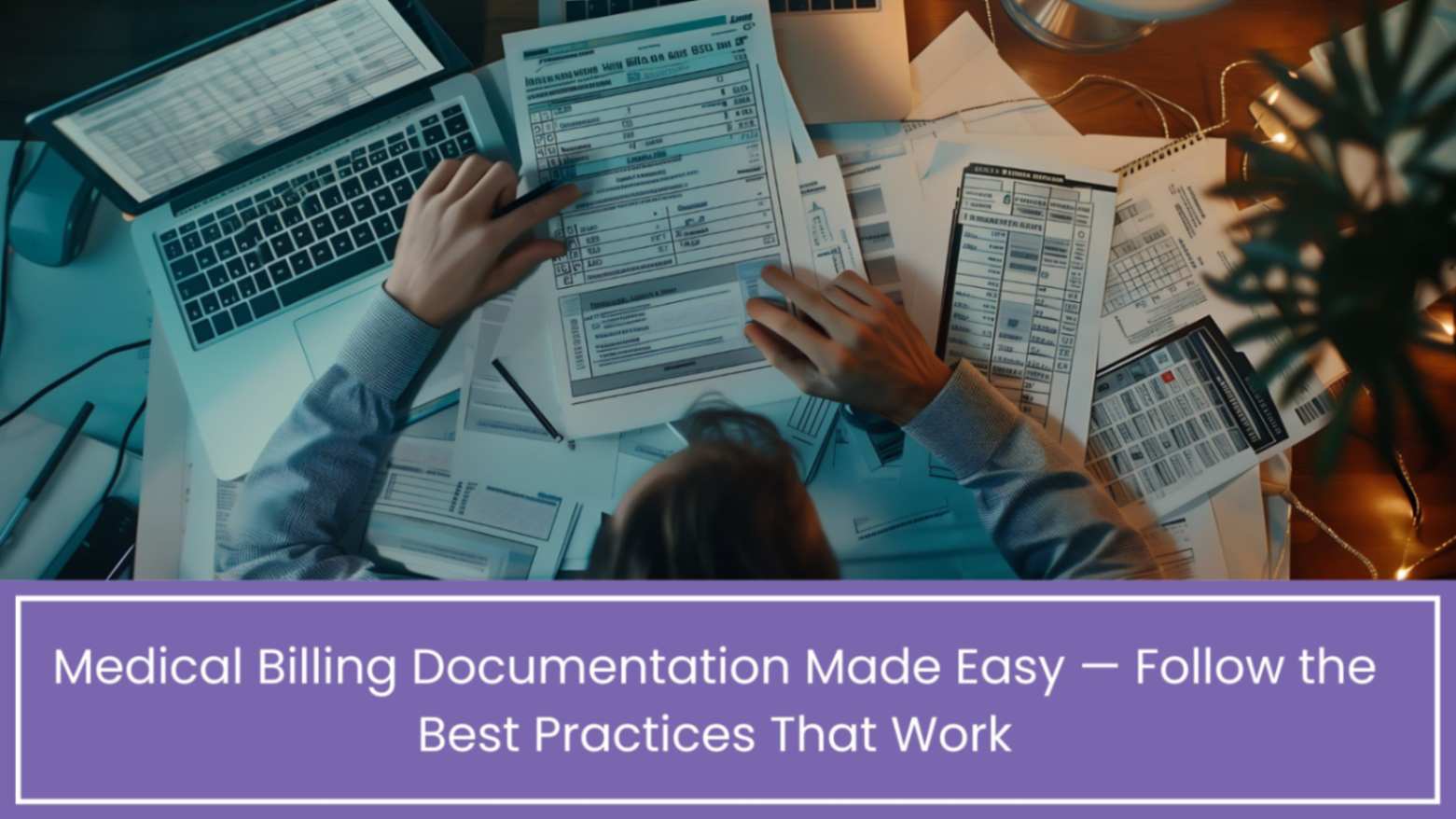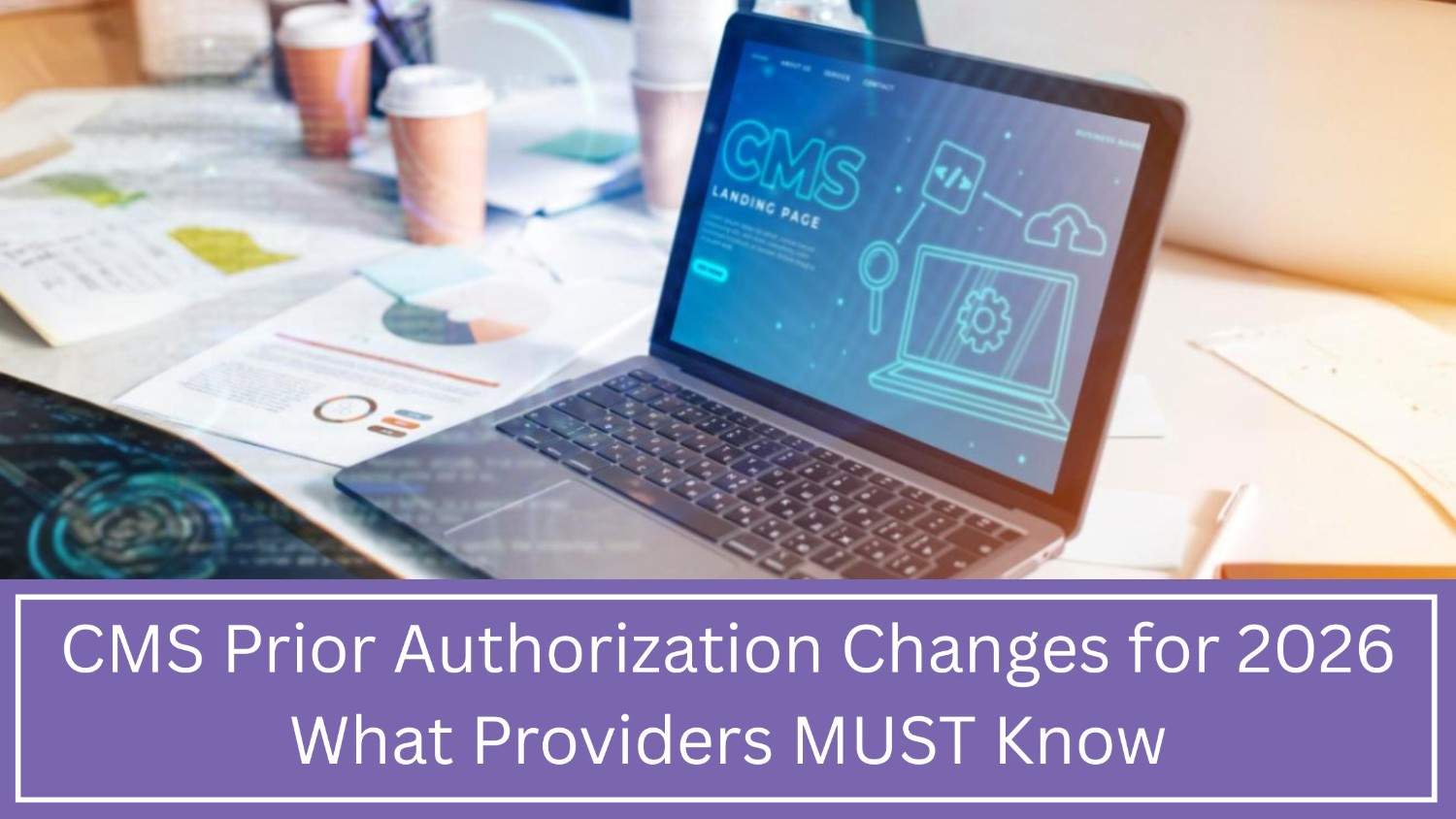Best Practices for Medical Billing Services Documentation
You want stuff that actually prevents denials and audit headaches — not soft platitudes. Below is a lean, brutal, operational playbook: what are the best practices for medical billing services documentation, how to structure it, how long to keep it, and the exact controls to stop downstream rework and revenue leakage.
Table of Contents
Top 10 Documentation Best Practices in 2026
Good documentation protects revenue, proves medical necessity, and shields you in audits and investigations. Bad or missing notes are the single easiest way to lose money and attract compliance risk. The Office of Inspector General and CMS explicitly link accurate records to program integrity and payment support.
Document what was done and why — precisely
Capture the reason for encounter, assessment, decision, treatment, and follow-up. Vague notes (e.g., “patient seen, advised”) = instant audit red flag. CMS and Medicare contractors still require clear, chronological notes supporting billed services.
1.Standardize required fields:
Make a minimum required field set mandatory for claim submission: problem/diagnosis, plan of care, CPT/HCPCS billed, time spent (when relevant), prior auth status, and clinician signature/timestamp. Structured fields cut denials and speed audits.
2.Capture payer-specific evidence at submission:
For services that commonly trigger prepayment review or PA, include the exact documentation packet (orders, imaging reports, lab results, PA reference) with the claim or have it auto-attach on request. This reduces prepayment holds.
3.Version control + immutable audit trail:
Every edit must record who edited what and when. If you allow later edits, keep the original note plus an addendum (not a replacement). OCR/forensic reviewers love clean audit trails; regulators expect it.
4.Retention schedule: follow HIPAA and payer rules
Keep required documentation per HIPAA and applicable payer rules — commonly 6 years for HIPAA-related docs and up to 7 years in some CMS/DME contexts. Check state law for medical-record minimums; where stricter, follow the stricter rule. Don’t delete.
5.Signatures & authentication:
Ensure electronic signatures are timestamped and auditable. If virtual scribing or remote clinicians are involved, the record must show the responsible provider attested to the content.
6.Make documentation inspection-ready:
Create a “claim packet” view that QA/appeals teams can open with a single click: claim, EHR note, relevant labs/images, prior authorization Services, and prior-visit history. If it takes >3 clicks to assemble in an audit, fix your workflow.
7.Automate pre-submit scrubs with embedded rules:
Prevent obvious mismatches (e.g., CPT-diagnosis mismatch, missing PA flag) at claim build time. Build payer-specific rulesets that block submission until critical fields are present.
8.Train coders & clinicians together:
Clinician notes must be written with billing in mind. Run monthly spot audits and feedback loops; correct the clinician, not just the coder. OIG and CMS guidance emphasize prevention through education.
9.Protect PHI and log access:
Limit who can view/alter claim documentation and log all access. Security controls and access logs are non-negotiable under HIPAA Security Rule expectations.
Mandatory Fields for every Billing Record
Make these required. If any are empty, the claim is blocked for manual review.
- Claim_ID
- DOS (date of service)
- Patient_ID / DOB
- Provider_NPI / Provider role (rendering, ordering)
- Encounter reason / chief complaint
- Diagnoses (ICD-10) with linkage to CPTs (primary dx linked to billed CPT)
- CPT/HCPCS billed + units
- Service location (POS)
- Start/stop time or duration (when time-based E/M or time-coded services)
- Objective findings / tests ordered (if relevant)
- Clinical decision & medical necessity statement (short bullet)
- Prior Authorization: yes/no + auth number + date approved (if applicable)
- Supporting docs attached (orders, labs, imaging) — list names
- Billing status (submitted/held/appealed)
- Clinician signature / attestation + timestamp
- Audit trail: created_by, created_at, last_modified_by, last_modified_at
Audit readiness & workflows
- One-click claim packet for auditors and payers.
- Pre-submission quality gate: block submissions missing any mandatory fields above.
- Denial-trigger Mapping: map top 20 denial codes to the missing documentation that causes them; deploy scrubs.
- Retrospective hold+fix queue: claims that fail downstream payer checks auto-route to a “documentation fix” queue with SLA <48 hours.
- Monthly Clinical-Coding Huddle: review 10 random denials, assign root cause, and update templates/rules within 72 hours.
Use Noridian/CMS documentation guidelines as the standard for Medicare claims; mirror them for commercial payers where possible.
Security Retention, and Compliance
- Retention: Keep documentation at least 6 years for HIPAA purposes; some CMS/DME guidance specifies 7 years for certain records — honor the longest applicable retention. State law may require longer. Don’t rely on “we’ll purge after 2 years.”
- Security: Apply least privilege, encryption at rest & in transit, and maintain access logs (OCR expects you to be able to produce who accessed/modified PHI).
- BAs and contracts: If billing is outsourced or you use a third-party scribe, ensure BAAs cover documentation retention, access, and breach notification.
KPIs that prove documentation is working
- First-pass acceptance rate (by payer & CPT)
- Documentation-related denial rate (denials with missing/inadequate documentation)
- Average time to assemble claim packet (audit readiness)
- % of claims blocked at pre-submit gate (and reasons)
- Appeals success rate when documentation is strengthened
Quick Checklist for Billing Services
Force the minimal mandatory fields into your claim build template.
- Run a 30-day sample: pick 100 paid claims and 100 denials — confirm documentation for each against the mandatory list.
- Implement one pre-submit scrub: block missing prior-authorization services number for the top 5 high-dollar CPTs.
- Set retention policy to 6 years minimum in your records system and flag DME/Medicare claims for 7 years.
- Create a 48-hour SLA for the documentation fix queue.
ALSO READ – Simplifying Revenue Management: How Medical Billing Services Empower Small Practices






